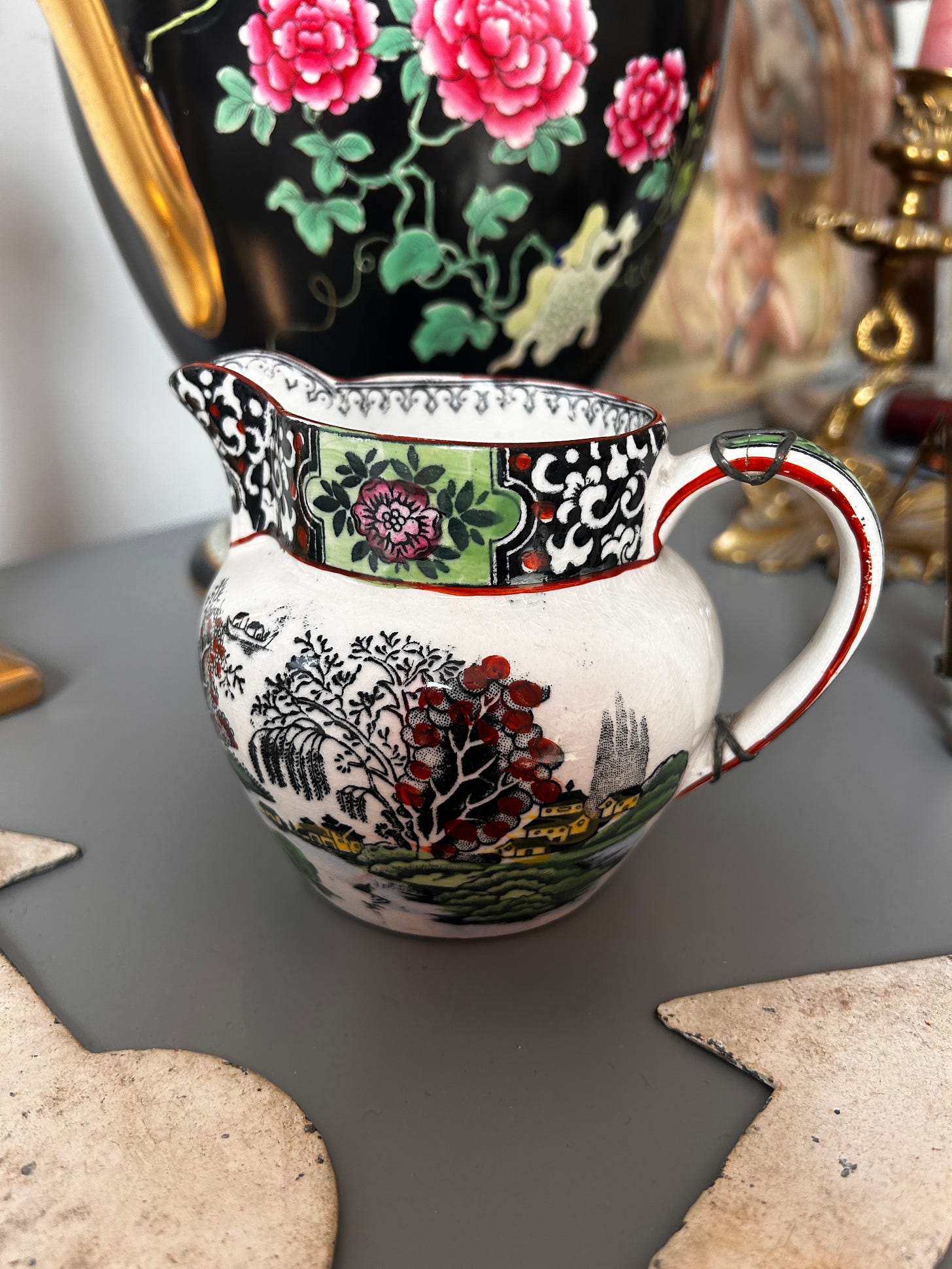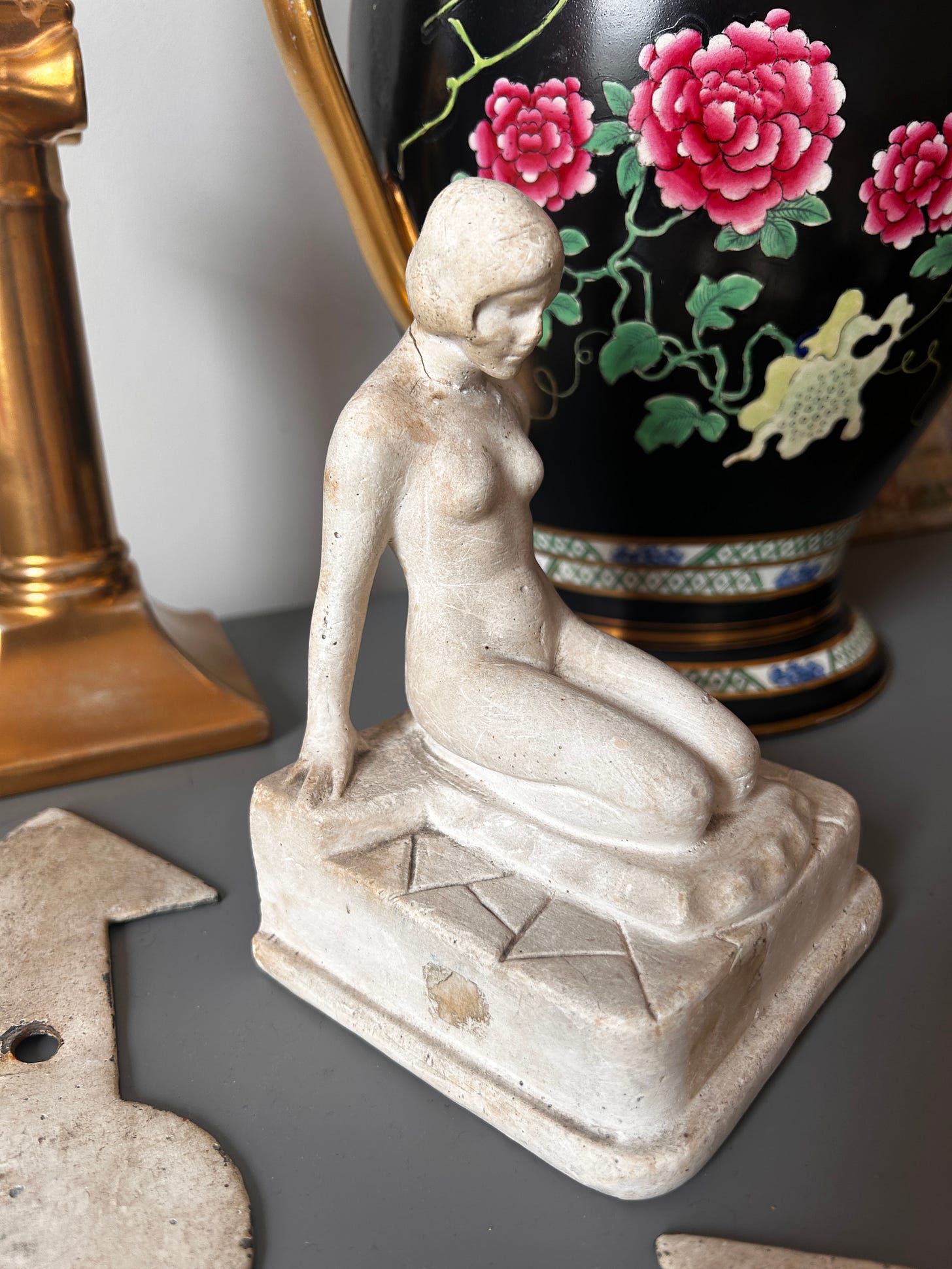In Praise Of Broken Things
A celebration of secondhand treasures that show their scars, and why we need to value the mended, the worn, and the beautifully imperfect.
I’ve been thinking a lot about some of the items in my home that I absolutely love. Every single one of them is secondhand. Many are very old. And all of them are broken.
Not destroyed. Not worthless. Just broken, noticeably, and beautifully. And every one of them was mended before I even found them. Someone cared enough to fix them, and I loved them enough to take them home. These pieces speak to me, not in spite of their flaws, but because of them.
It’s made me think more deeply about how we consume and how we operate in secondhand spaces.
As someone who’s in charity shops nearly every day of the week, I’ve come to notice certain patterns. Often, I’ll see customers carefully examining pieces they’re interested in. But then comes the part that always gives me pause: someone heads to the till and says, “Oh, have you seen this chip?” or “This fabric is bobbling,” and then asks for a discount.
It happens regularly. Sometimes it’s a gentle conversation, other times more tense but most of the time, the customer walks away with a few quid off. And I can’t help but feel a bit heartbroken, because wear and tear shouldn’t be a reason to devalue something. Especially not in a space where everything already carries a story.
There’s a mindset we need to shift, especially in secondhand shopping. We have to stop looking for "new," or for things that feel untouched or “box-fresh.” When we do that, we miss out, not just on beautiful objects, but on meaning, history, and the chance to appreciate the care others have put in before us.
Let me show you what I mean.
The Perfect Green, Cracked Mug
There’s a ceramic mug in my house, probably from the ‘30s, which is designed by Keith Murray for Wedgwood. The New Zealand architect and industrial designer, famous for the sculptural designs he created in ceramic, silver and glass for Wedgwood and Mappin & Webb. Its shade is “matt green”, with a smooth, biscuit glaze that absolutely sings to me. It is the colour to end all colours for me. It’s had its handle completely shattered and reattached, and I found it at the Wandsworth Oasis on Mitcham Lane for £6. In mint condition, it could fetch £50–60 and when I took it to the till to pay for it, the sales assistant very nearly removed it from sale, so concerned was she about the condition, but I wouldn’t be parted from it. Just holding it in my hands, feeling the smooth rim of the glaze made me realise how special this fractured piece was. Yes, I can’t drink from it, but I do use it to hold pink carnations in spring, which is more than enough for me. It’s still stunning. Still full of life and purpose.
The Busted Girl And Her Pooch
Then there’s a figurine; a girl with a fox terrier, made in the 1930s by Austrian manufacturer Goldscheider, designed by G. Bouret. I’m not usually a fan of figurines (the twee stakes are high in this particular porcelain category), but this one stopped me in my tracks. I think it was the mix of her present condition, she’s completely shattered and lovingly restored, alongside her pose and the adoring look she extends to her pup. You can see every crack, but her expression is still so gentle as she gazes at her pooch that it melted my heart. These normally sell for an eye watering £1,500 to £3,000 but I picked her up for a fiver in a Sheffield charity shop. She’s not perfect. But she makes me smile every time I pass her on the mantelpiece.
The Little Jug In Braces
I also have a little jug—nothing rare or remarkable—but the handle has been soldered back onto the body with a level of craftsmanship you rarely see now. It cost me £5, and I’ll keep it forever. It’s just the right size to hold flowers that have lost their stems,
The Lady Who Lost Her Head
And finally, there’s a strange little figurine (the only other one in my household!) of a woman kneeling. A museum reproduction, I imagine. Her head has been knocked clean off, maybe by an overly enthusiastic duster, but someone took the time to glue it back on. There’s something potent about her, something serene. I have thought to look her up, or at least do a Google image search on her, but can’t quite bring myself to do it. I like the air of mystery this piece, found for £2 in Emmaus, West Norwood, has in its current condition.
All of these pieces wear their history on their surface and they are all, in their own way, beautiful.
They’ve also helped me change the way I look at other secondhand finds. When I see a jacket with a drop stitch, a frayed sleeve, or a few missing buttons, I don’t walk away. If I love it, if it connects with my style, I know I’ll find a way to bring it back to life.
We need to hone our instincts, not just for what’s valuable, but for what’s valuable to us. Not just for what looks good to everyone else, but for what makes our homes and wardrobes feel like our own.
Because broken things still hold joy. Still offer beauty and still deserve to be loved.
More than that, we need to get comfortable with brokenness. To stop being so quick to dismiss it, as every time we argue for a discount on an item that shows its age, every time we treat wear and tear like it’s a flaw instead of a feature, we send a message. A message that broken things aren’t worth a second chance on the shop floor at all.
It’s too sad to consider that any of the pieces I’ve just shared with you, pieces that bring me so much joy, might’ve ended up in the bin, discarded before anyone even had the chance to see their potential.
So let’s be the ones who see it. Who rescue it. Who mend, care, and appreciate, not just what’s pristine, but what’s had a life and can continue to do so.








So lovely, can’t wait for your next piece xxx
I'm with you Emily, some of my favourite pieces are chipped or cracked but still much loved xxx